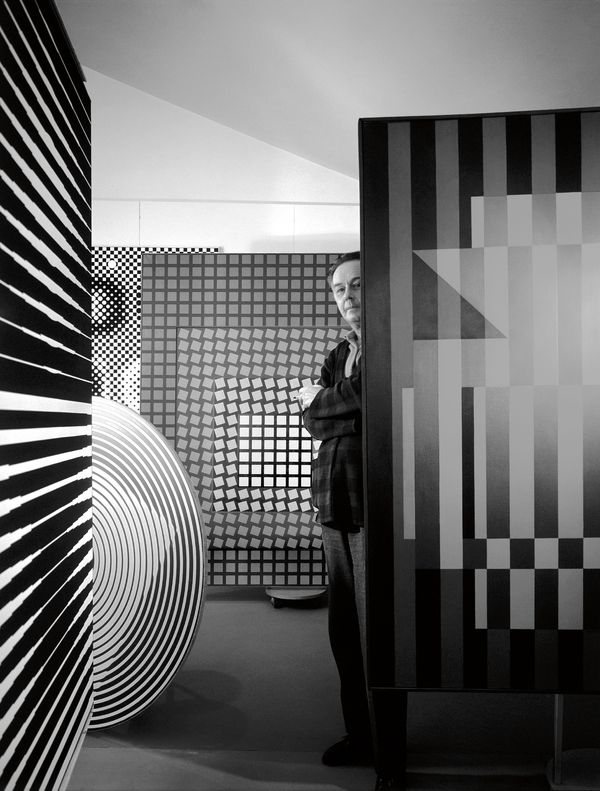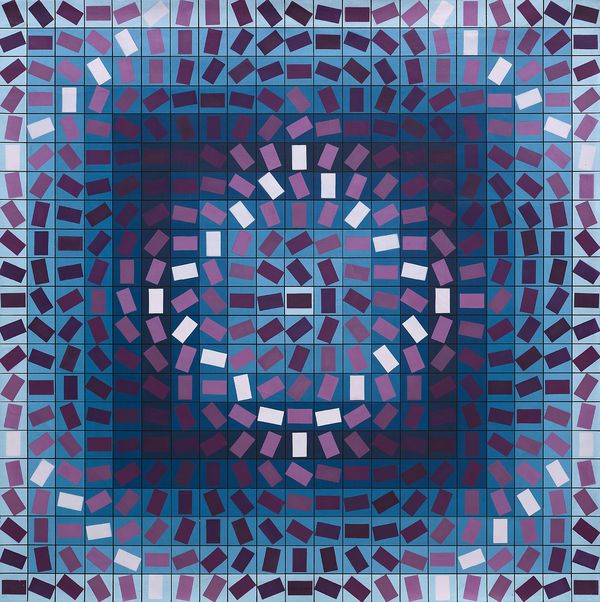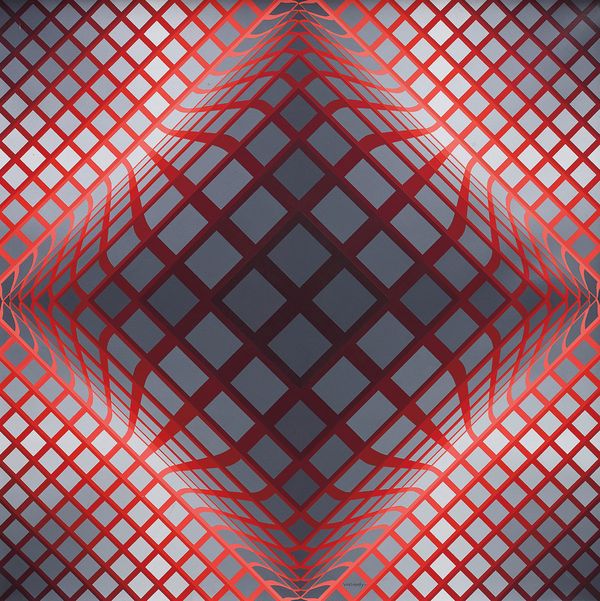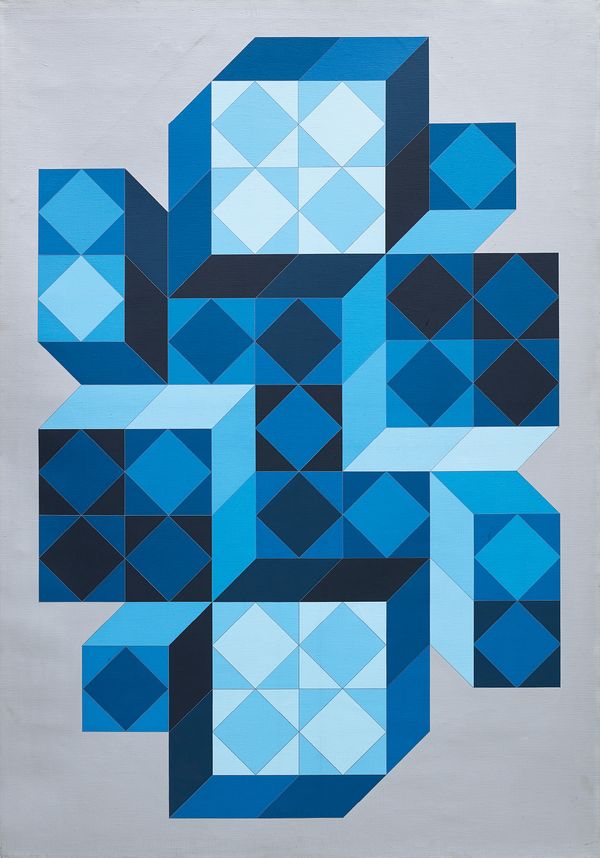1964: Portrait of Victor Vasarely © Photo by Robert DOISNEAU/ Gamma-Rapho via Getty Images
Celebrated champion of Op Art, Victor Vasarely's oeuvre, like his individual works, presents a varied series of tessellated optical effects through the artist's unique lens. Experimenting with form and color, Vasarely's mastery of composition rhythmically creates a hypnotic narrative throughout his career.
Networks, webs and weaves serve as the artist's coordinates of fascination, which in turn connect the following selection of works from our London Day Sale, produced from 1972 to 1990. This cross-section of the artist's later work demonstrates the consistency and conviction of his characteristic geometric abstraction and masterful abstract trompe l'oeil. Triggering dynamic optical phenomena, each work creates movement and engages the active participation of the onlooker. Attempting to overcome individualistic painting and an artist's personal touch, Vasarely rejected the aura of the original work from Walter Benjamin's famous 1936 essay, "The Work of Art in the Age of Mechanical Reproduction."
Favoring reproducible models, Vasarely's tessellating images utilize serial procedures and break through constrictions, challenging the existence of Benjamin's sensory perspective, the 'aura', when the uniqueness of a work is stripped away.
Vasarely's mastery of composition rhythmically creates a hypnotic narrative throughout his career.
Victor Vasarely Sans titre, circa 1987
The playful harlequin centered in Vasarely's monumental Sans titre, circa 1987, appears to be leaping from the canvas, cutting through the carefully constructed three-dimensional space. Looking to escape from the material confines of the plane, the harlequin toys with the composition and embodies the artist's continuous experimentation with spatial limitations. Vasarely's use of color immerses the figure with pictorial energy and further propels it towards the spectator, commanding his complete concentration while maintaining the artist's characteristic geometry. Exploring the relationship between space, the spectator and his surroundings, Vasarely's concern with verticality and the artistic plane is evident.
Victor Vasarely Sakk, 1988
Further drawing on the interplay between the viewer and the canvas, Sakk, with its graduating color, draws the viewer towards the vortex of the piece. The dizzying illusion, a cosmic dream, carefully constructed against the gridlines of the work, sets the scene for a characteristic combination of optics and cybernetics. Vasarely skillfully breaks down the barriers between technology and art, the exact progression of the shapes further displaying the underlying scientific and theoretical foundation of the artist's plastic experimentations. The precision of the rectangles, presented amidst the interplay of light and shadow, fills the canvas with three-dimensionality, encompassing the viewer in the characteristic components of Vasarely's masterful illusionary oeuvre.
Victor Vasarely Dell-Piros, 1975
When viewing Vasarely's Dell-Piros, executed in 1975, we are immediately plunged into the artist's sublime geometric cosmos. Through spherical distortions in his grid-like composition, the picture plane appears to warp, while a central electrifying form appears pronounced. Gray and red tonal variations seem to effervesce, stellar-like, while Vasarely's formal intricacies create a stratospheric viewpoint. Exploring the distortion of color and form in his seminal Vega series, Vasarely's weaved geometric variations seem to reference the void of space. Subsuming the viewer like a vortex, areas of the work seem to both recede and push out simultaneously. By imbuing a sense of vertigo, Dell-Piros transports us to an otherworldly universe through the artist's meticulous geometric precision and careful equilibrium of colour and light.
Victor Vasarely Tridim-Kek, 1972
Crystalline and coursing with vital energy, Vasarely's 1972 work, Tridim-Kek, is exemplary of the artist's persistent exploration of color and form to create the appearance of three-dimensionality. Combining the techniques developed in his progressive Alphabet Plastique and 1969 Gestalt series, Tridim-Kek demonstrates the artist's preoccupation with manipulating small units of color, encased in geometric forms, which are repeated and contrasted to create a snake-like movement throughout the work. Deep cobalt, sapphire and azure blues provide a patchwork of tonal relationships, provoking the viewer's eye to wander over the rhythmic motion of the central form. Contrasting highlights of triangles, diamonds and parallelograms offer structural harmony to the suspended celestial form.
Conveying the geometric composition of a snowflake, in Tridim-Kek Vasarely seeks to channel both the rigidity of science with the spontaneity of nature to achieve formal and tonal harmony.




